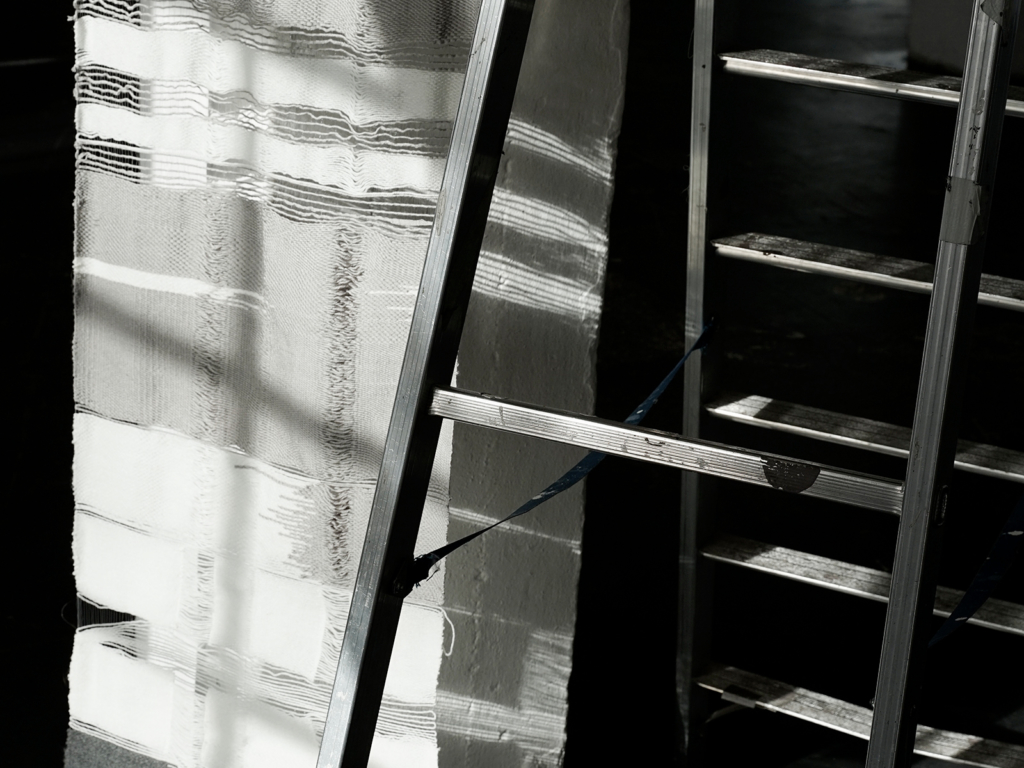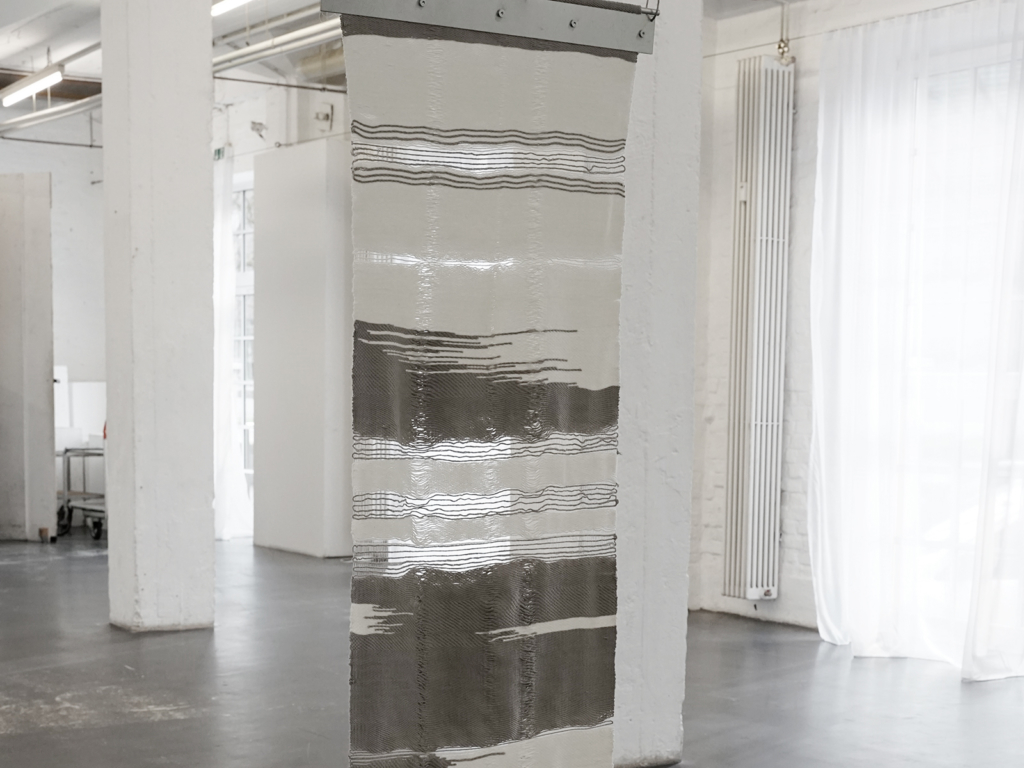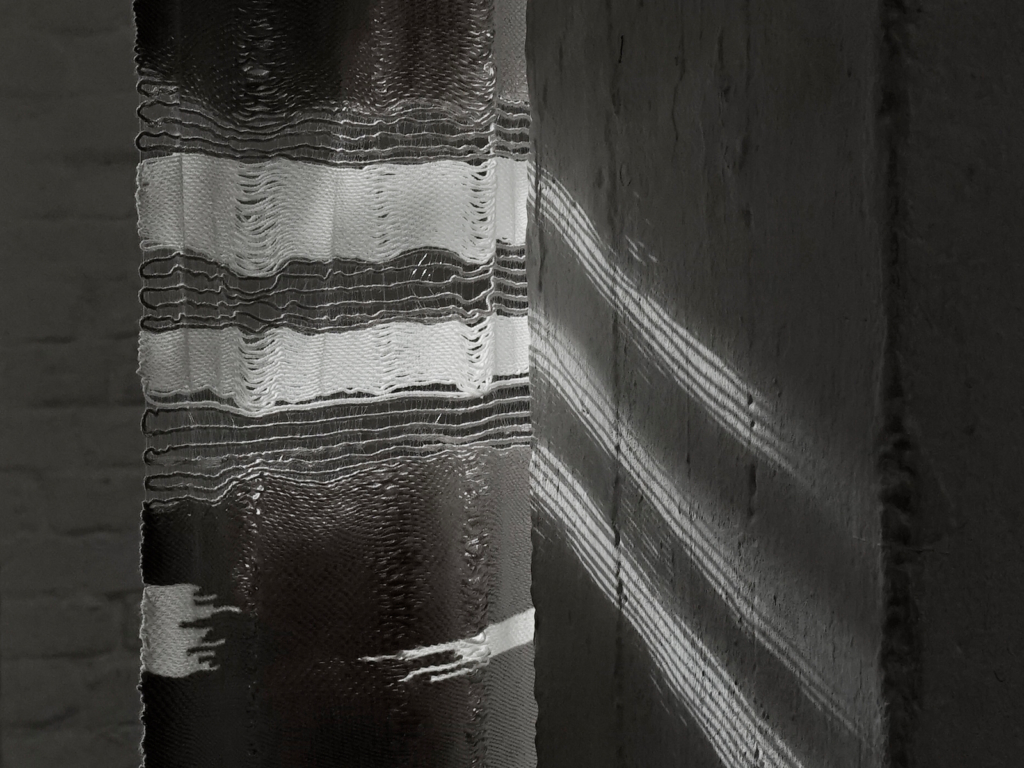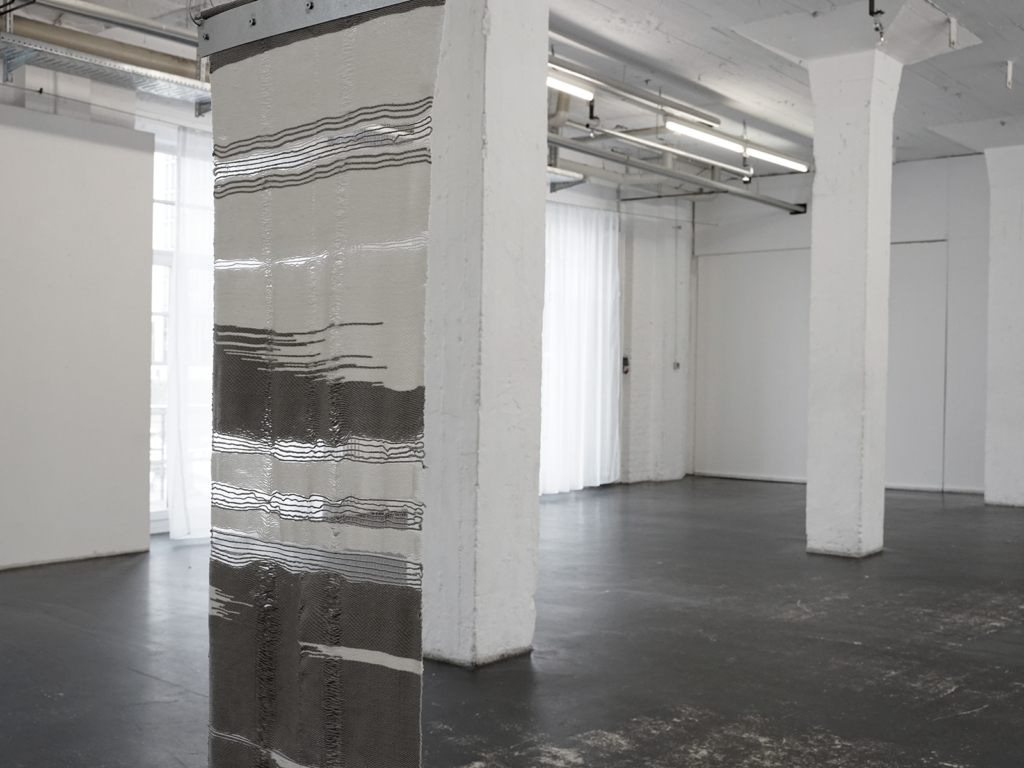Textiles are a central and recurring theme in architecture. The potential of textiles and architecture lies in the design of relationships that arise through action, movement and perception. They connect cultural, social and political aspects.
Lotta Hagedorn approaches the textile medium as a phenomenon of boundary, limitation, and delimitation. Her theoretical work takes up Gottfried Semper’s concept of ›Stoffwechsel‹ and contextualizes it with textile space-making processes in 20th and 21st century art and architecture – from the textile artist Anni Albers, who taught weaving at the Bauhaus and Black Mountain College, to the Design + Research Studio Limbo Accra from Ghana, which seeks to transform unfinished shells with expansive textiles.
Semper used the term ›Stoffwechsel‹ (material change) to describe the phenomenon whereby structural forms originally associated with the processing technique of a material are liberated from their constructive task and transferred to other fabrics as ornamentation. Through such processes of translation, textiles and architecture become dynamic structures of bodies, materials, and spaces. Anni Albers worked intensively with woven textiles as room dividers and understood them as three-dimensional objects. Both sides of the textile room divider are connected within the fabric and can thus be seen as two equal surfaces. The textile room divider thus detaches itself from its constructive side and presents itself as a flexible, fragile surface, as a material interface, as a ›membrane‹ that plays an active role in the selective transmission of natural movements such as light, air and sound. Lotta Hagedorn has analyzed and designed this function of the textile with her own woven work in space.
Pictures: Lotta Hagedorn: Surface Change, Intermediate work, 2024.






